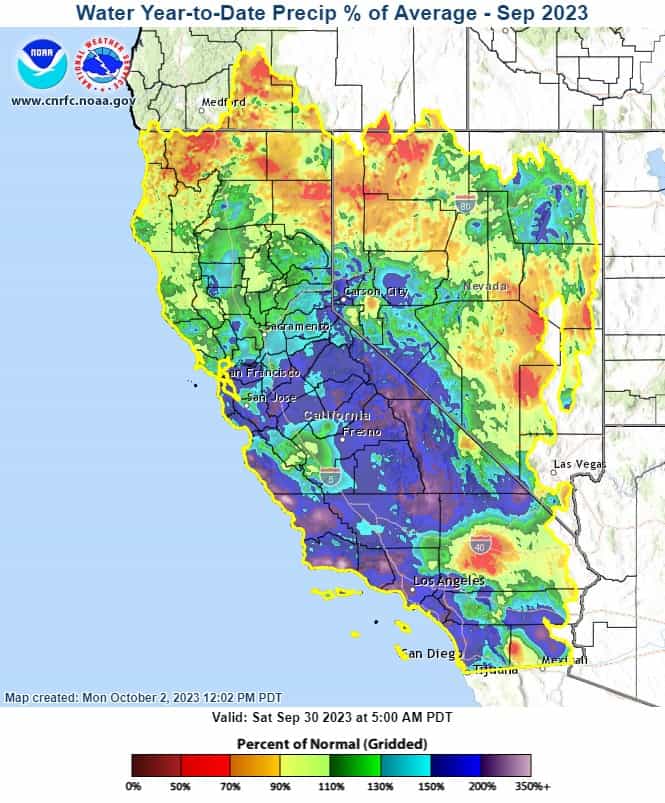
Wrapping up on Sept. 30, the past water year in California was unlike what many predicted. Despite a forecast of drier conditions due to La Niña, the state saw lots of rain and snow thanks to multiple atmospheric river events, particularly during the three weeks post-Christmas, resulting in record-breaking precipitation. This filled reservoirs to near-full capacity and mitigated wildfire risks, credited to the increased soil moisture levels throughout the summer.
“Water year 2022-23 ended this weekend (Sept 30) with above normal precipitation for most of CA (except far Nrn) and for SW and NE NV. Over 200% of average with over 40 inches above normal precipitation in some areas of the Srn Sierra and Big Sur Coast and Santa Ynez and San Bernardino Mtns.”
– CNRFC
Yet, the heavy precipitation had downsides, causing widespread flooding in early 2023. But for ski enthusiasts, it was a season of delight. Renowned ski resorts like Kirkwood, Mammoth, and Bear Valley crossed the 700″ snowfall benchmark, marking the year as their snowiest.

Summer brought some relief with its typical dry pattern. However, events like Hurricane Hilary and an atypical cool storm in September ensured the state’s moisture levels remained high. With Lake Shasta at 98%, Oroville at full capacity, and Folsom Lake at 95%, the state’s water resources are more robust compared to the beginning of the year when they hovered around a mere 25-32% capacity due to prior droughts.
According to the California Department of Water Resources, the wet winter also augmented the groundwater storage by 3.2 million acre-feet. As the state transitions into a new water year, with a potent El Niño emerging, there are strong indications of another wet winter for California.
